







































Endless possibilities —just down the street.
The same personalized support. The same hands-on learning experience. All new possibilities for your career.



Explore versatile programs at Loyola College of Law.
· Juris Doctor – full time, part time, and evening programs

· Master of Arts in Environmental Law
· Master of Arts in Health Law & Administration

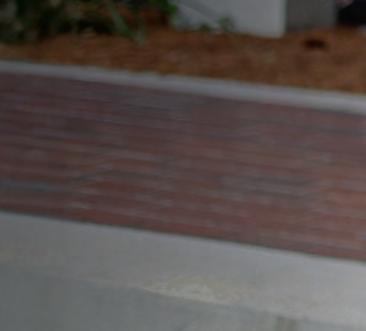





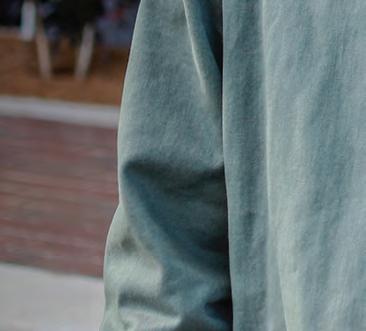






 Dimitri Celis ‘21, MA ‘23 BA in Environmental Studies MA in Environmental Law
Dimitri Celis ‘21, MA ‘23 BA in Environmental Studies MA in Environmental Law
As we enter into the beginnings of April, we enter into a month of sustainable, eco-friendly endeavors for this year’s Earth Day. At Loyola, there are a variety of efforts, by students and faculty, to create environmental progress across campus. Throughout this issue of The Wolf, we are here to highlight eco-friendly efforts and push them to the forefront of Loyola. Our campus sits in the heart of beautiful New Orleans, so we must maintain a clean, sustainable Loyola for ourselves and future Wolf Pack residents. From the implementation of composting units to the organization of various sustainability initiatives on and off campus, Loyola and its students are at the forefront of environmental action. Join us at The Wolf in engaging in more sustainable efforts for a cleaner, greener lifestyle at Loyola through our stories - and taking them out into the real world to create environmental change. Don’t think you can participate in a large change just yet? No worries! Learn from Laci Barrow about some tips and tricks on
how to create eco-friendly habits in your own dorm. Follow Zach Cesarini into new outdoor activities and hobbies to maintain an active, yet more fun, lifestyle. Discover methods of obtaining and creating sustainable fashion with Isa Castillo for everyday wear and longevity of clothing - with help and advice from Loyola’s very own Costume Shop. Whether from a Loyola or New Orleanian view, this issue of The Wolf exhibits a bird’s eye view into sustainability and environmental efforts through a diverse lens of stories and contributors. Even if you walk away with simply enjoying these stories - or wanting to go out into the world for change - I only hope that we at The Wolf encourage you to take a second look at the natural world around you.
 Dajah Saul Editor, The Wolf Magazine
Dajah Saul Editor, The Wolf Magazine
WOLF EDITOR...........................DAJAH SAUL
CREATIVE DIRECTOR......TAYLOR FALGOUT
EDITOR IN CHIEF..........MALEIGH CRESPO
MANAGING FOR PRINT......SOPHIA MAXIM
PHOTO EDITOR.....................LACI BARROW
DESIGN CHIEF...................ZACH CESARINI
SPORTS EDITOR.........ISABELLA CASTILLO
MODEL............................VIOLET BUCARO
PHOTOGRAPHER...............SOPHIA MAXIM
DESIGNER....................TAYLOR FALGOUT
PHOTO EDITOR..............LACI BARROW





















































Understand how sustainability efforts BEHAVE through ecofriendly tips and step-by-step guides to a cleaner lifestyle. This section introduces achievements and advice from Loyola’s student body on how to strive towards a better environment.
Rowan Sawyer is a biology pre-health junior and the incoming vice president of the Student Government Association. With SGA, she currently serves as chair of the sustainability committee and the speaker of the senate.
Sawyer’s voice in the SGA has allowed her to take her ideas for change and bring them to life. Sawyer has helped foster the community garden initiative and composting for “Crawfish in The Quad.”
Sawyer was invited to the Keep Louisiana Beautiful Coalition this semester where she spoke with other student leaders from different universities across the state. There, Sawyer learned about different ways other student leaders tackle environmental concerns on their campuses.
As the incoming SGA vice president, alongside president Diamond Dixon, the duo intend to increase recycling spaces on campus.
“The best part of creating initiatives in student government is the outreach,” she said. “The programs are just so fruitful.”
By Rodrigo Delgado

“There are little things that we can do without big infrastructural changes that can create a better, sustainable campus.”
–Rowan Sawyer
Environmental Law Society
is a student-led organization that seeks to demonstrate and build Loyola’s power in the field of environmental law, according to vice president Jessica Munson. The 2L student said the overall goal of the organization is to bring attention to and support local environmental organizations, creating a network of environmentally-minded students at Loyola, and helping draw awareness to environmental issues that affect the Loyola community locally.
“Being a part of the Environmental Law Society has helped me feel so much connected not only to my physical environment but also has brought me closer to the people who also care for the environment at my school,” she said. “As vice president, I feel so privileged to collaborate with other passionate individuals who share a commitment to sustainability. I feel so lucky to be apart of such a wonderful organization that promotes environmental protection and sustainability in my home state.”
(L-R): Brenna Landis, Taylor McGown, Ingrid Osmundson, Sabrina Sawyer, and Jessica Munson. Not pictured: Abby Wallace and Tyler Sanchez Courtesy of the Environmental Law Center Rowan Sawyer poses with a crawfish composting bin at “Crawfish in the Quad” on March 15, 2024. Courtesy of Sawyer The Wolf / 6
Jackie Mutter, an environmental studies senior, joined Students for Environmental Action her first semester at Loyola. She is currently the co-president of SEA alongside Ellie Redemann.
“SEA is Ellie and I’s baby, and we kind of built it from almost nothing.”
With the help of Mutter, SEA has been able to work with Coalition to Restore Coastal Louisiana, where they spent an entire day recycling oyster shells, which are used as an artificial reef and are used to combat coastal erosion.
Mutter feels as though seeing other students that are a part of SEA make bonds with one another and having the urge to do more with their environment is something that she considers is one of the best aspects of being co-president.
Mutter and Redemann are also both Environmental Justice scholars, receiving support from the Entergy Charitable Foundation.
“Whenever someone asks why I make it, I always say ‘Because I have to.’”
–Electra Pelias


has been taking the scraps of fabrics and giving life to something new for as long as she could remember.
Since she was young, psychology senior Pelias has gravitated towards making art out of trash.
Pelias is an artist that uses recycled materials to express herself all while using art to help process her emotion.
Pelias will be selling ceramics and jewelry at the upcoming Earth Week Sustainability Fair, where she will be donating 20% of the proceeds to the Alliance for Affordable Energy.
“Clay itself is an infinitely recyclable material up until you fire it, so I take comfort in knowing all my mistakes can be recycled into new clay,” Pelias said.
Jackie Mutter carries recycling bins in the Danna Center courtyard. Courtesy of Mutter Electra Pelias poses with her sculpture. Courtesy of PeliasIf there’s one thing living at college teaches you, it’s that you have to adjust your ways of living. Your sleep schedule might change, your study habits, and especially sustainable practices in your life. You might find yourself struggling to maintain eco-friendly habits with an on campus lifestyle. Luckily, there are simple, yet effective ways that you can continue living a green lifestyle throughout college.
Minimize or ditch the artificial light in your dorm by redesigning your room to accentuate natural light openings. Letting the sun shine in on your favorite study spots reduces e-waste from lights that have to be plugged in.













































The Wolf / 8

If you’re ready for a new spring wardrobe, go through the clothes you’re ready to toss from your dorm, and donate them to Wolf Pack Wardrobe to make space for locally thrifted threads. Not only will you save money, but you’ll prevent tons of fabric waste.
You can also upcycle clothing that is no longer working for you in its current state by transforming it into a new piece. There are many no-sew options of upcycling, like turning an old t-shirt into a cute crop and adding some pins or iron-on patches.
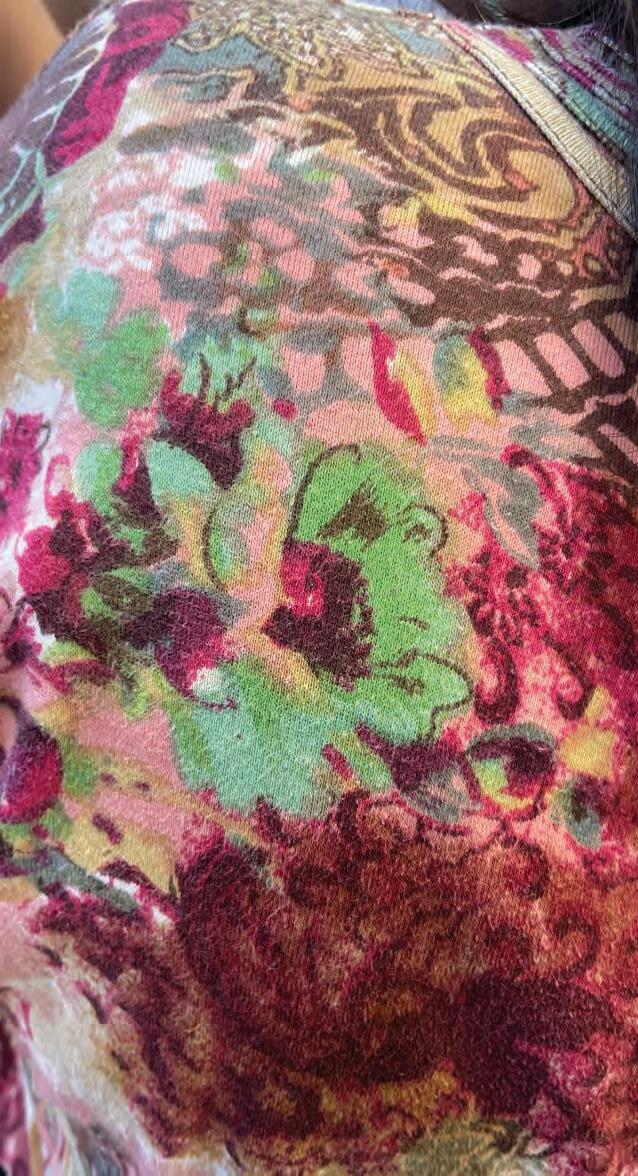
 English sophomore Elinor Upham searches through the racks of Wolf Pack Wardrobe on the 3rd floor of the Communications/Music Complex. Maleigh Crespo/The Wolf
English sophomore Elinor Upham searches through the racks of Wolf Pack Wardrobe on the 3rd floor of the Communications/Music Complex. Maleigh Crespo/The Wolf
Audubon wins. Don’t get stuck inside the University Sports Complex for every single workout. Swap out one of your indoor workouts with a walk or run in Audubon park to reduce electrical usage from cardio machines.



















































While it’s not the responsibility of the individual to solve the world’s global problems, one simple way to aid in environmental efforts is through the use of reusable water bottles. The purpose of these water bottles is to minimize the amount of plastic being quickly used and disposed of.

Reusable water bottles do not have to be expensive, but more costly options available. These bottles can simply be a plastic water bottle being reused multiple times, or one with timestamps to keep you hydrated throughout the day.
Whichever you choose, there is a reusable bottle available for anyone and everyone.






When it’s all said and done, your notebook is full, you’ve finished the class and you don’t need the notes anymore, what are you going to do? Throw the notebook away, right? Try a sustainable alternative, such as a digital note taking software like Google Docs or Notability, provided by Loyola for free! When you’re finished with your notes, just archive them and avoid creating unnecessary waste.



















Glass Half Full, Keep Louisiana Beautiful, ArcGNO, The Grounds Krewe, and SOUL Nola are five non-profit organizations in New Orleans that work towards sustainability.
Each group has their own special way of promoting sustainability, whether that be through recycling Mardi Gras beads and throws, converting glass bottles into sand, planting more trees for infrastructure and natural purposes, or simply just picking up trash to keep Louisiana clean.
These non-profit organizations are critical to New Orleans’ sustainability efforts, and there are volunteer opportunities for each group for community members and Loyola students alike to partake.
3935 Louisa St., New Orleans, La 70126
Known as a grassroots glass recycling organization, Glass Half Full recycles glass to give back to the environment. They recycle their glass into sand and gravel that is used for coastal restoration, disaster relief, environmental construction, and other glass products. By recycling the
glass and converting it into other forms, it has diverted millions of pounds of glass. Volunteers can sign up to work recycling shifts or other events throughout the year.
111 N Causeway Blvd. Suite 104, Mandeville, La 70448
Keep Louisiana Beautiful, which is an affiliate of Loyola as of spring 2023, works toward reducing waste and litter, increasing recycling, and protecting the natural beauties of Louisiana. A few of their initiatives include: bettering policies and infrastructure, improving environmental law enforcement, and educating people in the community about littering.
925 S Labarre Road, Metairie, La 70001
Locals and tourists alike can recycle Mardi Gras beads and throws through ArcGNO. Bead recycling through ArcGNO helps keep the streets of New Orleans clean and stop beads from clogging the drains. ArcGNO is one of the organizations that is part of Recycle Dat, a newly formed group that promotes recycling during Mardi Gras. Bead recycling through ArcGNO also provides jobs for those who have intellectual disabilities, and the organization encourages people of all abilities to volunteer to make this carnival season more sustainable.

3962 Magazine St., New Orleans, La 70115
Another bead recycling organization, Grounds Krewe aims to reduce the amount of waste and promote sustainability and recycling in New Orleans, specifically during Mardi Gras. Grounds Krewe sets up recycling bins all across the city during Mardi Gras, making it for parade-goers to either throw their trash away or recycle. They have an interactive marching krewe called the “Trashformers,” with krewedelusion that goes around the French Quarter and encourages people to recycle their aluminum cans and plastic bottles. The “marching krewe with a job to do” prevents 30 gallon bags of recyclable material from ending up in landfills each Carnival season. They also make Mardi Gras throws out of sustainable materials and parter with krewes like Krewe of Iris partners to maintain sustainable throws for parade-goers.
1123 9th St., Apt. 103, New Orleans, La 70115
Beyond bead recycling, Realcycle aims to instill faith in recycling to New Orleanians by providing 100% reliable recycling solutions for commercial, residential, and live events.
Composting is their specialty with all recycled food items being processed, mixed with carbon based material, and then sifted after breaking down for 90 days before being sold as finished compost materials for local plantings and growers.
The cardboard received by the organization is baled and shipped to Pratt Paper Mill where it is shredded and pulped to create new fibers – for new cardboard products.
After collecting aluminum cans, Realcycle sorts and sifts through them to remove all mixed metal materials, which must be recycled separately. Once the cans are sorted and crushed, they are donated to NolaCans4Food.
A local disposes of beads in front of an ArcGNO facility in Uptown, Feb. 24, 2023. These beads are recycled and reused the next Mardi Gras. Sophia Maxim/The Maroon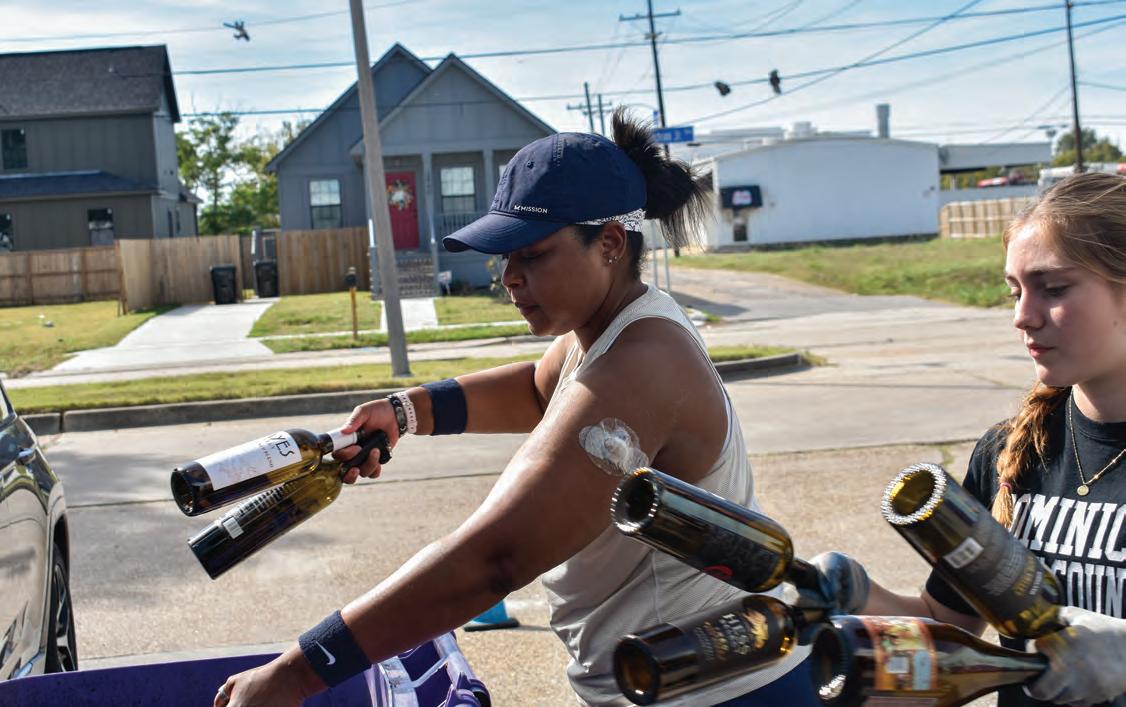
3000 St Claude Ave., New Orleans, La 70117
This organization collects proceeds from aluminum cans to feed the New Orleans community. They’ve distributed over 1,400 meals to community fridges and diverted 103,577 cans from landfills. The organization picks up cans on the second Sunday of each month by sending text reminders to donors before picking up the bags from their homes. The organization also has several drop-off points around the city at places such as Lucky Dagger Tattoo, Twelve Mile Limit, Frenchmen Community Garden, West Bank, Nola Trap Kitchen, and Sea Cave. Drop-off hours can be found on their website. The organization is run primarily by volunteers, which they are always seeking, in roles ranging from cooking, driving, tabling, and scrapping.
3530 Magazine St., New Orleans, La 70115
The store, which is nestled on Magazine Street, is the city’s first zero waste shop. The store’s mission is to reduce plastic waste by offering bulk refills of brand products, such as Dawn, Tide, or Seventh Generation with sustainable alternatives and reusing the containers customers already own. All store products are cruelty-free, all–natural, non-toxic, and ethically sourced from small businesses.
1927 Martin Luther King Jr Blvd., New Orleans, La 70113
ricRACK goes beyond being a consignment shop, as their mission is to increase public awareness of sustainability and waste reduction within the fashion industry. Through sewing classes, a creative re-use shop, educational outreach, community textile recycling, and “throw
me something handmade” initiative, the nonprofit has diverted 8.5 tons of textiles from landfills with 1,040 volunteer hours. The store is seeking one time or weekly volunteers in-store every Thursday from 12:00 - 4:00 p.m.
4110 Hamburg St., New Orleans, La 70122
SOUL, which stands for Sustaining Our Urban Landscape, focuses on planting trees around the city for environmental purposes. Planting trees can help with flooding, subsidence, temperatures, and overall health and wellbeing of those in New Orleans. SOUL cares for the trees they plant to ensure the trees thrive in the community. They also provide educational resources for those who want to learn more. SOUL offers a variety of volunteer opportunities, including tree planting, truck driving, maintaining trees, and even team leading and office volunteer work for those with physical limitations.
Loyola could become Louisiana’s next arboretumBy Violet Bucaro
Seeds have been planted for Loyola’s campus to reach arboretum status for over 25 years; it’s up to administration to water them.
Arboretums are a collection of woody plants, generally trees, that can represent unusual, rare, and endangered species or important native species, according to biology professor Mark Tobler.
Loyola’s proposal for arboretum accreditation was made over 25 years ago, but the administration was not interested at the time, according to environmental communication program director Robert Thomas.
Arboretums are adjunct to specialized botanical gardens, or gigantic woodlands, where native trees are the centerpiece, Tobler said. They promote education, along with conserving, protecting, and preserving trees and wildlife.
Long ago, the palm court was a parking lot with a large cypress tree. The beloved cypress tree was cut down, as well as a beautiful live oak, Thomas said, which led to much angst and saddened students.
“People really cared; people cried about the tree,” Thomas said.
During the re-purposing of the parking lot, it was proposed to make the campus an arboretum wherein anything replanted would be a native species and be labeled, Thomas said.
The hope of building Loyola into an arboretum is to educate and create a space to develop the campus, Thomas said.
“It would also help in reducing heating loads and greenhouse gas emissions, reducing flooding, and providing diverse spaces for enjoyment and contemplation of nature,” he said.
Tobler said an arboretum is the way to combat many of our daily issues in rising climate concerns and the state of the environment.





It would affect carbon sequestration, shading to reduce the temperature of campus grounds and buildings (and thus reducing energy demand for air conditioning), water uptake and retention that alleviates flooding, and provide soil stabilization, Tobler said.


arboretum: a place where trees, shrubs, and herbaceous plants are cultivated for scientific and educational purposes

An arboretum would, “relay the message of how [important] trees are in providing services,” Tobler said. Loyola could become a hub for students, all around Louisiana, to learn about trees and plants, he said. Loyola’s campus could become a place where people come to learn about trees, plants, and botany, he said.


The challenges to having more plants on campus is an issue of space.
Tobler said it would be more promising if the environmental program could self-fund with grants.
He said that becoming an arboretum would not require that much funding, just more time and effort needed, as the soil is the most expensive.
There is a misconception that a more expansive habitat on campus would require tons of unavailable maintenance. However, Tolber said, while he would be maintaining and helping the area’s growth, there will always be students engaged and active in helping too – even after he retires.
Thomas said the palm trees in the Peace Quad could one day become a more evolved space, for we’d aim to have native trees found in Louisiana.
Tobler said one day, the palm trees are going to die because there is an incurable palm disease in Louisiana, which leads him to believe the Peace Quad could be replanted with magnolias and other local


trees that would provide the space with shade.



Students are enthusiastic about getting more involved in plant education and environmental protection, Tobler said.Still, there has been little initiative by the administration to make the vision come alive.

Loyola’s administration needs to embrace it, in order for Loyola to become an arboretum, Thomas said.


Thomas said that Loyola becoming an arboretum would not only be for beauty and pride for us but also attract new students and visitors.


“Every science teacher in the city would want to take their students on a walk here,” he said.





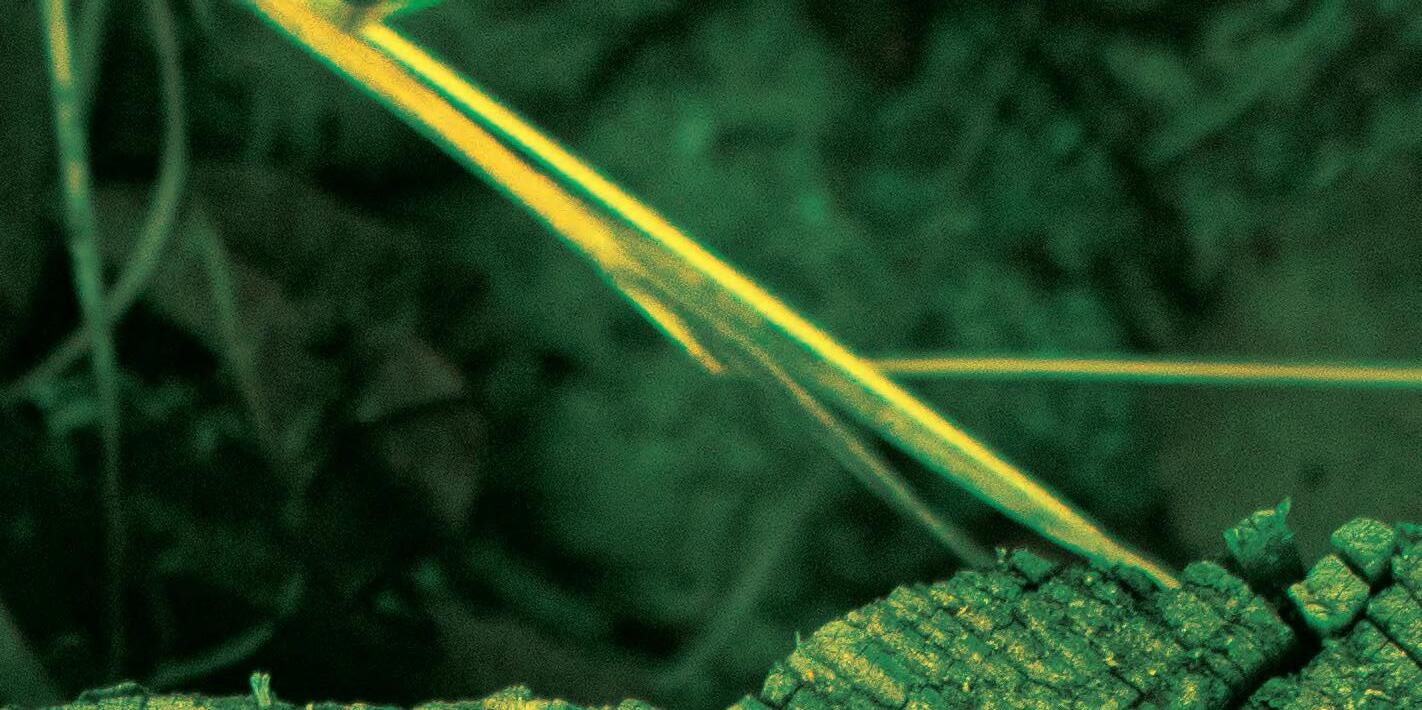



Small or large efforts, making efforts and awareness to SAVE the environment are necessary for our student body to know. Throughout this section, learn more about campus wide efforts towards a greener campus and city.


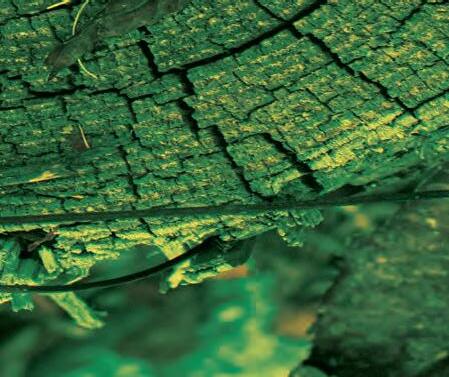




To reduce electronic waste, Loyola has partnered with the Capital Area Corporate Recycling Council, a non-profit organization dedicated to e-waste recycling.

This collaboration offers the responsible disposal of e-waste from faculty, staff, and students at no cost, accepting a wide range of electronic equipment, regardless of condition.
The CACRC repurposes these electronics, providing refurbished devices to lowincome families and seniors.
Over the past two decades, electronics have become an integral part of how society functions, with people relying on laptops, smartphones, and computers inside appliances people use daily. From personal use in homes to significant roles in educational settings, the adoption of platforms like Canvas, Google Classroom, Blackboard, and Moodle has been substantial.
The rapid advancement of electronics has shortened the lifespan of devices, leading people to replace their devices frequently, typically every three
to five years.
Properly disposing of electronics is challenging, as traditional disposal methods are illegal and environmentally detrimental. Most electronics contain hazardous materials, which can leach or release toxic substances into the environment.
According to the World Health Organization, in 2019, global e-waste production exceeded 50 million tons but less than 25% was recycled properly. This data sparked the term “e-waste.”
Loyola’s partnership with
CACRC aims to reduce that percentage.
David Young, senior procurement coordinator, encourages the university community to leverage this program.
“While we cannot accept every item, we have no problem telling you what we can and cannot take in our office or over the phone,” Young said. The purchasing department is in Marquette Hall 110.

Young added that they do not purchase old electronics; their role is to ensure environmentally sound disposal.
The purchasing department has also partnered with Staples Advantage to recycle used toner cartridges. Simply deliver the empty toner cartridge to central receiving in Monroe Hall 109, and the staff will package the used toners into boxes.
After Staples Advantage picks them up, the cartridges are either refilled or disassembled and components
are reused for remanufactured toners.
For individuals seeking to monetize old devices, services like EcoATM, which offer a practical alternative for electronic device recycling, provide compensation for used phones and tablets through refurbishment.
An EcoATM kiosk can be found at Winn-Dixie on Tchoupitoulas Street, and the Loyola shuttle service can take students to this location upon request from 10 a.m. to 6 p.m.
In addition to utilizing resources like the CACRC and
EcoATM, individuals can take proactive steps to minimize their e-waste footprint and promote environmental sustainability.
Establishing a box for e-waste in homes and offices for collecting batteries, cables, and small electronics until they can be taken to a proper recycling facility is a practical start.
Moreover, extending the lifespan of devices through repairs and upgrades, rather than replacing them, can significantly reduce e-waste generation.
Opting for refurbished or pre-owned electronics saves and decreases demand for new production. Lastly, using manufacturer take-back programs, where companies like Apple and Samsung recycle their products, ensures responsible end-of-life management of electronics.

From a partnership with Keep Louisiana Beautiful to weekly farmer’s markets, Loyola continually makes efforts to make our campus a environmentally-conscious community.
If you’ve ever stepped on Loyola’s campus, you’ve seen recycling bins at nearly every corner of the campus. These paw print bins were added to campus in 2016, but since then, Loyola’s efforts to encourage the pack to recycle haven’t stifled. In 2022, Loyola became a Keep Louisiana Beautiful university affiliate, where it had to conduct a waste audit, litter survey and assessment, form an affiliate leadership committee, design an affiliate logo, create a work plan, and participate in “Love the Boot Week” – which Loyola accomplished during its annual Earth week celebration. Since then, recycling cans with graphic labels that glean “Let LA shine” have been scattered around campus for student use. In February, Loyola’s partnership with KLB expanded to include glass recycling, which was made possible by a $4,800 grant from the nonprofit.
Loyola-Sodexo hosts bi-weekly farmer’s markets in the “fish bowl,” or the Danna Center courtyard. The market features a variety of affordable fresh produce items for the Loyola community to purchase for less than $5. Along with produce sales, other vendors sell products which include cookies from local troops of Girl Scouts of the USA and boba tea from Moon Garden. In addition to vendors, attendees are able to taste sample foods by Loyola Dining chefs. At the Earth Week market on April 26, attendees will be able to make their own edible plants and see a cooking demo.
The student government association funded a community garden, which will be planted around the Tom and Gayle Benson Jesuit Center once construction is complete. The garden will be maintained by the environmental department and provide fresh produce for Iggy’s cupboard. Crawfish Composting
This semester, SGA Senator at Large Rowan Sawyer passed a bill to introduce crawfish composting on campus, wherein crawfish would be composted for soil. SGA provided bins at “Crawfish in the Quad” for crawfish connoisseurs to sustainably dispose of their crawfish shells.



SGA’s sustainability committee partners with ArcGNO to provide bead recycling bins in residence halls during Mardi Gras to reduce bead waste.


Over a decade ago, Loyola introduced water bottle filling stations around campus with the efforts of former SGA president Khaled Badr and Bob Thomas, director of the center for environmental communication.
















Earlier this year, Starbucks became the one of the first national coffee retailers to accept reusable cups, and the Starbucks at Loyola is no exception.
All new construction and renovations on campus intend to meet Silver LEED Certification or better. In 2012, after renovations, Thomas Hall received LEED gold certification for its environmental sustainability components per the U.S. Green Building Council. The Law School, located on the Broadway campus, has achieved LEED silver certification. LEED, which stands for Leadership in Energy and Environmental Design, is a certification developed by the USGBC to set a benchmark for design, construction and operation of high-performance green buildings. LEED Gold is the second highest level of achievement by the USGBC and Green Building Certification Institute (GBCI).




While sewing, cutting, and constructing the theater department’s custom wardrobe, the crew behind the Loyola Costume Shop also works to cultivate a conscious fashion culture within Loyola.
Working among sewing machines, needles, laughs, and a cornucopia of unique garments, the team is committed to styling and educating Loyola’s campus on ethical fashion consumption.
The Loyola Theatre Department’s visual identity can be found in the 6th floor of Monroe Hall. Custom, vintage, and “delicately curated” garments are hung, draped, or folded within the workshop –all hand-selected to construct the characters we see on Loyola’s stages.
About five years ago, costume designer and professor Kaci Thomassie was appointed director of the colorful workshop in Monroe Hall. Now, she oversees and directs the threads composing the theater department’s wardrobe and hopes to sew another factor into Loyola: education around fashion ethics and sustainability.
As a product of experience and passion, Thomassie and the students behind these garments were aware of the harmful environmental and humanitarian impact of the textile industry and began sustainability efforts within their own space.
“Most of our inventory are donations or thrifted,” Thomassie explained. “So what happens to all the stuff that we don’t use, or we can’t use because it was made for a show? Instead of just throwing it in a
landfill, what we do is we put it in a hackand-slash pile.”
These scraps are funneled into use for the costumes sold during the “Bootique” sale.
“These pieces become free-game for our creatives to construct costumes for our Halloween Bootique sale,” Thomassie said. “So a piece from a prom dress will become a one-of-a-kind queen of hearts costume.”
The money earned from the Bootique sale circles back into support for the theater and costume department at Loyola.
“Our department doesn’t always get the budget to buy new machines every year or new mannequins every year,” Thomassie said.She added that self-sustainability and transparency are important to the department.
In addition to the Bootique sale, the Loyola Costume Shop has expanded its sustainability efforts further. “We pay for a subscription to a company called For Days. They accept and work with any scraps, any fibers, any garments, and with the least amount of carbon footprint possible,” she said. “If something isn’t resellable through their site, they break it down and turn it into insulation.”
The shop also participates in Earth Week each year wherein they table to inform students and help them mend their clothing.
Thomassie said her entire life has been injected with creating and learning. “I am a fashion nerd,” she said.
Thomassie said she is committed to
educating Loyola, and in her classes, she discusses the dangers of commodifying fashion and reminds her students that people want three things.
“Fast. Cheap. Good. You cannot have all three. All three? Someone is getting hurt in the process,” she said.
In her stagecraft class, she teaches students about garments aside from technical theater components. She asks students “What chemicals are in your clothes? Are those synthetic fibers or natural ones? Do you know what fibers decompose into microplastics?”
But the biggest problem lies in misinformation, Thomassie said.
When it comes to thrifting, Thomassie recalls some of her own fears, “A brand new white t-shirt is touched by at least 80 hands,” she said.
“Fabric content is not clean, even if we wish it were.”
To combat thrifting fears and to aid in clothing durability, the costume shop has some tips. “You should always wash your clothes upon bringing them home,” theatre junior Justice Mosley said. But you should re-wear those clothes you wore to class for an hour, Thomassie said.
“Use a vodka and water spray to clear the smell and stains. And invest in a drying rack,” she said. Mosley is one of the six students who helped in the creation of 150 costumes last year.
Excited to inspire and inform, Mosley directs the Loyola Costume Shop Insta-











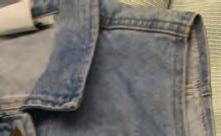
















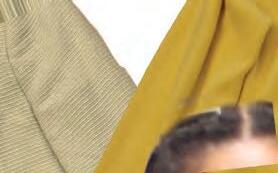





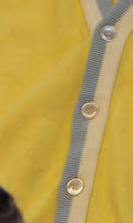





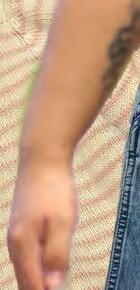




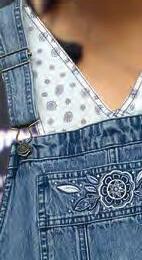
gram account and hopes to push Loyola’s “fashion forward” students to learn about the department.
Connection to what you wear is crucial to sustainability, according to Mosley, who explains that sustainability starts with something simple: connecting through learning.
“Learn how to repair your clothes. If you’re trying to shop more sustainably, you don’t want to throw away every fast fashion item in your closet. It’s about learning to take care,” she said.
Mosley and Thomassie recommend ricRACK, a textile recycling non-profit that combines creative skillbuilding with environmental responsibility, as an accessible
















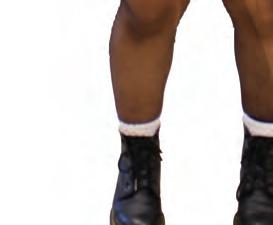























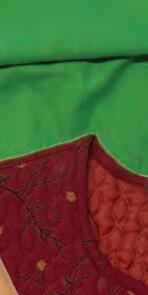
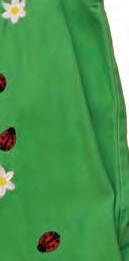














way to learn about caring for your closet. ricRack, which is on Martin Luther King Jr. Boulevard, was started by costume designers who are aware of how wasteful the film industry is, Thomassie said.
They have thrifted vintage sewing machines and supplies. They also offer affordable sewing lessons and thrifted clothes,” she said.
In addition to tangible learning, Thomassie urges the Loyola community to change their mindset.
“7 billion on the world, think about it. We all get dressed. Every day, we should be aware of what we are putting on our bodies, not just in them,” Thomassie said
There are people behind everything, she said. “That five-dollar top is not worth more than a human life,” she added. “Valuing humanity is so important. It’s all we have.”
Still, Thomassie remains hopeful because of Loyola’s student body. “The students are attuned and sensitive to these things,” Thomassie said. “You are students with eclectic styles, who aren’t afraid to bend and break rules. You aren’t afraid to play with them. Whether through gender fluidity, or alternative styles, you are open to expression. That is something special that Loyola has in its back pocket. Your interest is there, now we have to back that interest with information.”
Photo illustration: Junior Justice Mosley tries on clothes from the Wolfpack Wardrobe.It felt so special to be able to be part of a conversation surrounding crawfish composting at other universities and then implementing it on my own campus, Sawyer said. ” ”
By Dajah SaulBiology Pre-Health junior Rowan Sawyer passed a bill within the Student Government Association for the inclusion of crawfish composting on campus. For the general body of Loyola, however, a question remains: what is crawfish composting?
“Composting is natural recycling that makes nutrientrich soil. Crawfish composting is the same thing, despite them having a tough exterior,” Sawyer said.
According to the Composting Network, composting reduces food waste by transforming waste and food leftovers into nutrients for soil. The process provides not only an eco-friendly planting system, but also reduces the amount of harmful landfill coming from discarded waste.
Sawyer, who was introduced to crawfish composting through an initiative by Keep Louisiana Beautiful, a non-profit sustainability organization in the state, said crawfish exteriors are filled with nutrients that can be broken down to enrich soil. The shell exteriors contain

chitin, a form of glucose that is filled with polysaccharides and other sugars nutritious to soil and helpful towards a plant’s defense system, she said.
As the SGA Speaker of the Senate, Sawyer said she advocated for crawfish composting for Loyola to become an eco-friendlier campus.
For Sawyer, the initiative was eye-opening to understand how other student governments at Louisiana universities handled composting for a healthier environment.
“It felt so special to be able to be part of a conversation surrounding crawfish composting at other universities and then implementing it on my own campus,” Sawyer said.
One event to introduce crawfish composting to the Loyola community is Crawfish in the Quad, an annual spring event put on by the University Programming Board filled with activities, fun, and of course –crawfish.
With a Loyola event like Crawfish in the Quad, Sawyer said that finding an ecofriendly method to dispose of crawfish shells is important
to maintaining a clean, sustainable campus.
Renting bins from the Composting Network, Crawfish in the Quad, according to Sawyer, will encourage students to participate with compost changes instead of discarding their crawfish in regular trash bins.
“The composting bins are for all food waste, so we can use them for the potatoes and corn pieces, along with the crawfish,” Sawyer said.
Sawyer said that through crawfish composting, she hopes
that students will take the extra time to discard trash and food waste in their respective bins around campus. Sawyer continued by saying that the event encouraged SGA to make crawfish composting a permanent fixture for Loyola.
“We are slowly making strides to become a more eco-friendly campus. Crawfish composting is one big way that SGA is helping Loyola become greener, and I am so glad I was able to bring it to our campus,” she said.
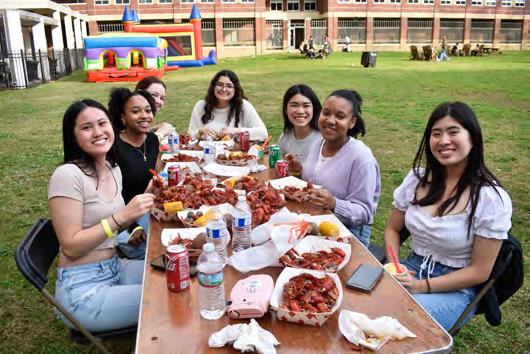
Although students were greeted with a maze of construction at the return of the spring semester, many were unaware that the tangle of pipes blocking their way would some day keep them cool as they slept. The purpose of these projects was to implement a district heating and cooling system in the new residence hall where Mercy Hall used to stand. According to Carol Markowitz, senior vice president and chief operating officer of Loyola, the installation of district heating and cooling infrastructure is crucial for ensuring optimal temperature control and comfort within the new residence hall. Markowitz explained that this system involves the use of centralized chillers and boilers, housed in a central plant facility next to Bobet Hall. By centralizing these systems, Loyola can achieve greater efficiency and effectiveness in maintaining comfortable indoor environments across its buildings. Markowitz explained that the construction
in front of Bobet Hall was to facilitate a chilled water flow from the main line to the new residence hall. These lines form a loop system, circulating water at a constant temperature to provide heating, cooling, and dehumidification as needed. While the development of these systems is essential for the university’s growth and modernization, not all members of the Loyola community view the construction endeavors favorably. Ana Colón, a public relations junior, shared a sentiment with other students about their confusion on the purpose of the new construction.
“I had no idea what the construction in front of Bobet Hall was about,” she said. “There is so much construction around campus that I don’t even know which is which anymore.” Despite these concerns and confusions, the implementation of district heating and cooling systems represents a forward-thinking approach to infrastructure development, aligning Loyola with sustainable practices and ensuring a comfortable environment for future generations of students.

Students win big with "Green Roofs are COOL"
By Dajah SaulDirector of Environmental Law Marianne Cufone, alongside a team of dedicated Loyola students, collaborated on a new environmental initiative titled “Green Roofs are COOL,” which won $10,000 for a promotional video which garnered a People’s Choice Award.
“Green Roofs are COOL” focuses on providing a cleaner environment and fresh produce by planting greenery on any roof within New Orleans.
Alongside the project’s community partner Recirculating Farms, the students mapped out a solution for creating cleaner air and a fresher environment for humid New Orleans.
Cufone said that with Recirculating Farms, they have been advocating for green roofs in New Orleans for several years for a variety of community reasons: stormwater absorption to reduce flooding, creating more green spaces in the community, amongst other areas for a greener New Orleans.
“[We want to] provide additional growing spaces for food, to create more pollinated gardens, for filtering air and water for cooling too,” Cufone said.
Over the course of a year, Cufone and students worked towards a proposal for the competition, vying for the People’s Choice Award, as well as a grand prize for $150,000. After reaching top five status, the team received an

great,” sophomore Abby Tamburello said. Green roofs are flexible with the type of roofs and building types around the city, Tamburello said, offering a multitude of options for planting the greenery, even if not every home or building acquired a green roof.
“Our green roof solutions will cool down the people, the city, as well as offer community benefits,” Tamburello said.
Team member Anna Upham added that green roofs are proven to be successful in places such as Chicago and Paris, France -where green roofs are a requirement for commercial buildings.
"We all dived in together, from different backgrounds and disciplines. We were all a great complement to each other."
—Marianne Cufone Director of Environmental Law
automatic $10,000 for their placement in the competition, which totals to $20,000 for the team to use toward their initiative for a cleaner, greener New Orleans.
“You know and love how New Orleans is a hot spot for food, music and arts?
We’re also a literal hot spot. There’s a lack of green space in our city, and that has devastated the wellbeing of our environment and the people who make the city so
The Wolf / 22
“The US Environmental Protection Agency recently found that roofs with plants are on average 30-40 degrees cooler than roofs without,” Upham said.
If the project were to run into any issues, team member Erin Gillen said that the main hurdles would surround laws, insurance claims, and hurricanes within New Orleans to better adjust to the need for green roofs in the city.
“With the proper solution, these green roofs can withstand high winds. With good information and awareness, this [insurance] can be resolved,” Gillen said.
With the addition of green roofs throughout the city, teammate Nikandra Morales said that the overall high temperatures of
the city could be reduced by an estimated five degrees, which is the goal of their project amongst others.
“Green roofs provide many other community benefits, such as filtering air and water for a cleaner environment. Our roofs can also grow food and create a habitat for pollinators,” Morales said.
One of their methods of planting the green roofs, project member Leila Avery said, is through the installation of Spanish moss, which is abundant throughout New Orleans and the state of Louisiana.
“Hydroponics can also support a large variety of plants, using water as an alternative growing medium,” Avery said.
Through the project’s community partner, Recirculating Farms, teammate Michael Richard said that the project would provide draining to the community, as well as growing and sourcing plants within the green roofs solution.
“We would be able to provide food and also have the potential to create jobs,” Richard said.
When asked about what the team will do with the prize money, Cufone said that the hope is to create a green roofs demonstration in Central City New Orleans, and as for the success of the project, Cufone said it was due to the collaborative efforts
the students.
“We all dived in together, from different backgrounds and disciplines. We were all a great complement to each other and worked so well together,” Cufone said.
of The students of “Green Roofs are COOL” alongside Director of Environmental Law Marianne Cufone; Back row from left to right: Leila Avery, Michael Richard, Leonard Khan; Front row from left to right: Erin Gillen, Abby Tamburello, Marianne Cufone, Nikandra Morales, Anna Upman. Dajah Saul/ The Wolf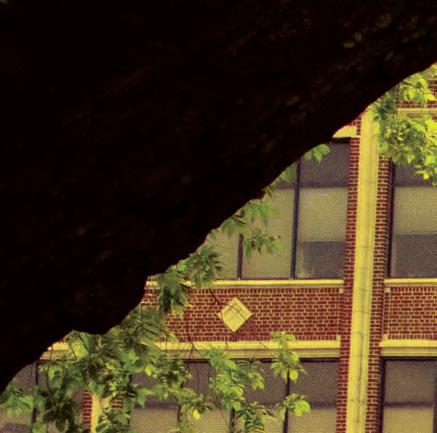



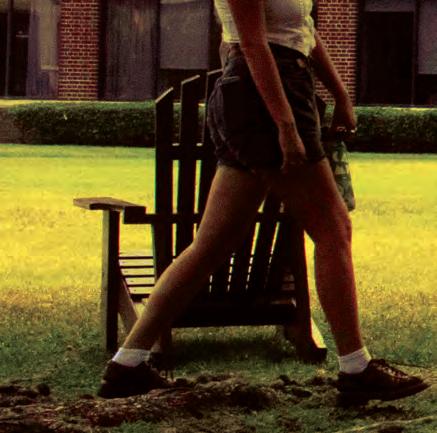



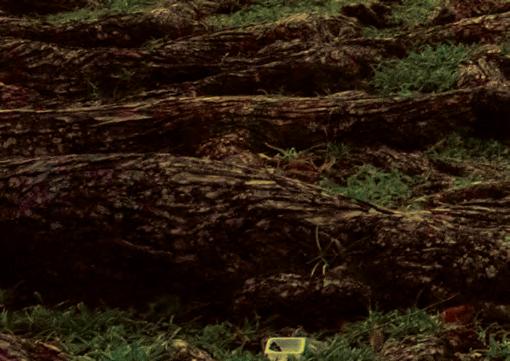



Outdoor festivities, crafty knickknacks, and nature photos galore are the rage to RAVE about! This section of the Wolf captures the fun, eco-friendly side to the environment.
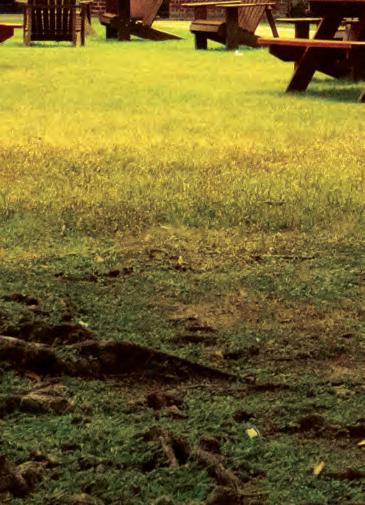













What need I say about this? Gorgeous beaches and tons of volleyball. A one way ticket to get tan and tipsy.



Blazing sunsets. The ocean breeze. Silly boats and great restaurants overlooking the water? Yes please.

 The Wolf / 24
The Wolf / 24







The fan favorite. City Park is plain massive, always an adventure around the corner.
Grab a beignet and kick back for awhile.
Our home away from home. Audubon houses Audubon Park, Audubon Zoo, and The Fly. A place of both social settings and quiet solice, Audubon does it all.



Crescent Park
Crescent Park is an absolute MUST that often flies under the radar. With the French Market, countless restaurants, and views of the river, one could

 Maleigh
Aaron Covin
The Wolf / 26
Maleigh
Aaron Covin
The Wolf / 26



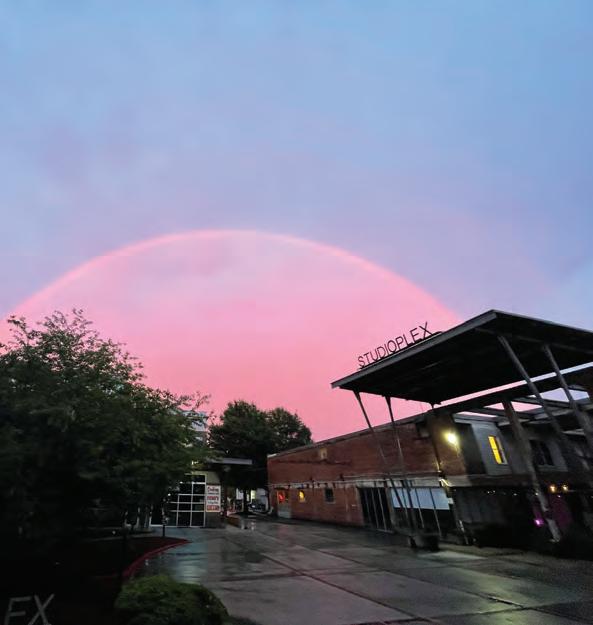
 Savannah Bergeron
Tanesha Taylor
Sophia Maxim
Maleigh Crespo
Savannah Bergeron
Tanesha Taylor
Sophia Maxim
Maleigh Crespo
















































 ABBEY LEBOEUF Campus Dietitian
abbey.leboeuf@sodexo.com
ABBEY LEBOEUF Campus Dietitian
abbey.leboeuf@sodexo.com
ustainability is a growing topic now-adays, especially when it comes to health and wellness, but what exactly does sustainability mean and how do we bring it to our plates?
Sustainability is more-so referred to agricultural practices that allow for the preservation of natural resources and minimize our footprint on the environment. Now we are not all farmers so these approaches will not fit into our daily lives, but eating involves everyone!
Eating sustainably means that we choose foods that are healthy for our bodies and the environment. Plant-based eating includes more foods from fruits and vegetables, legumes (beans, peas, peanuts), nuts and seeds, and whole grain products.
Tap water comes from a localized area whereas bottles of water or other beverages are usually shipped from locations far away and require more fossil fuel for transportation. Carry around a reusable water bottle and fill up at the tap.
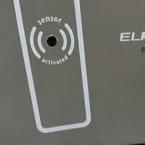

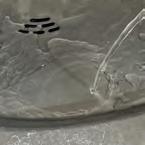




Research is showing that plant-based dietary patterns are linked with lower environmental impact compared to Western dietary patterns (high intakes of red meat, processed meat, pre-packaged foods, fried foods, etc.). Try to incorporate more plants into your diet like adding extra vegetables to your egg omelet, switching to a plant-based protein (tofu, black beans, nuts and seeds), or even going meatless for a day can really help the environment plus provide you with beneficial nutrients!
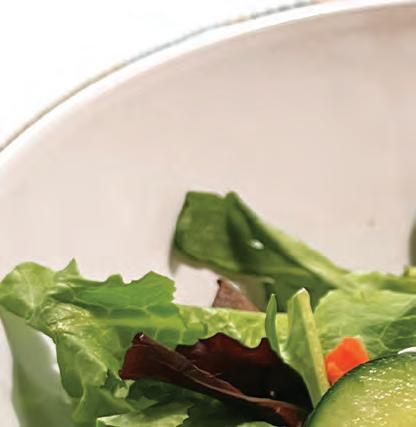



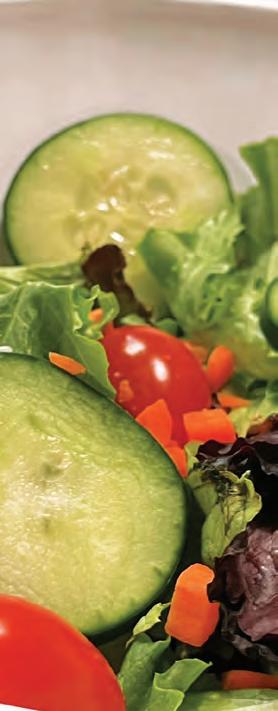



Make your grocery list include bulk items, minimally processed and more plant-based foods. This allows for less packaging and processing to avoid waste and unnecessary energy.






Visit your local farmers market or local farms to choose fresh produce and products that require less travel time, and therefore less fuel released into the air. It also is a fantastic way to get involved and support your community!
When products that are not in season, such as strawberries in the middle of January, they require shipments from outside locations, sometimes from far, far away. Research what peak seasons are for select produce to help keep a sustainable plate.
Abbey LeBoeuf has been a registered dietitian for four years and has worked in various settings before becoming a campus dietitian. She has experience working as a clinical dietitian, running a private practice working with high school athletes and teaching online nutrition classes at a local university.
Her nutrition philosophy is simple:
She enjoys using her skills to help make nutrition easy to understand and help people find a balance between comfortable foods and expanding their palates to discover new, healthy foods they enjoy.
LeBoeuf is looking forward to working with the Loyola campus community, and encourages Loyolans to reach out to her with dining or nutrition related questions.
All foods can fit into a healthy diet, and what we eat consistently over time affects our health.

Curated by Taylor Falgout
Celebrate Mother Earth with some tunes about loving, enjoying, and destroying our environment!
Evergreen
Richy Mitch & The Coal Miners
Trees and Flowers
Strawberry Switchblade
On Earth
The Sundays
April
Come She Will
Simon & Garfunkel
Heat Lightning
Mitski
Breathe (In the Air)
Pink Floyd
Welcome to My World
Anita Kerr Singers
Volcano Girls
Vercura Salt
Crying, Laughing, Loving, Lying
Labi Siffre
Sale el Sol
Shakira
Sundown Syndrome
Tame Impala
Alaska
Pinegrove
Catch The Breeze
Slowdive
Wild Horses
The Rolling Stones
All We Have Is Now
Flaming Lips
Come On Home
The Lijadu Sisters
Walk in the Park
Beach House
Avant Gardener
Courtney Barnett
Sun is Shining
Bob Marley & The Wailers
Hong Kong Garden
Siouxsie and the Banshees
Take Me Home, Country Roads
John Denver
Pet Carrot
Palehound

We're looking for a few good candidates for

Listen to what past editors have said about the job:
"Being Maroon editor is high-glamour, high octane stuff! Nothing beats the power of steering an ultra-eager, rockilicious staffto purple mountains majesty! I mean WOW! I laughed, I cried, I dropped rwo classes!"
- Hank Stuever, TV Critic, The Washington Post; 1993, 1996 Pulitzer Prize for Feature Writing runner up; Maroon Editor-in-Chief, Fall 1987
"It was the best oftimes, and it was the best of times."
- Liz Scott Monaghan, columnist and feature writer, New Orleans Magazine; Maroon Editor-in-Chief, 1963-64
"There were times I asked myselfif it was all worth it. Bue not on Friday. On Friday, I knew it was worth it."
- Michael Giusti, Loyola University Director of Student Media; Maroon Editor-in-Chief, 1999-2000
"Being the Editor-in-Chiefof our university newspaper is like being the conductor ofa chaotic symphony of deadlines, ink spills, and caffeine-fueled creativity- and I wouldn't trade this front-row seat ro organized chaos for anything."
- Patrick Hamilton, Emperor of Edits and Sultan of Satire, 2023"Being editor of The Maroon is only as impressive as the people you're doing it with."
- Maleigh Crespo, Maroon Editor-in-Chief, 2024


























































































